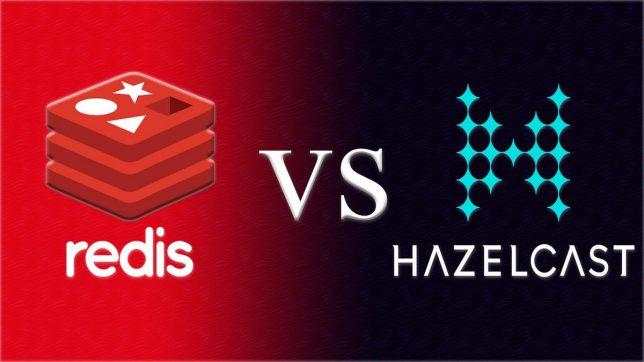Redis vs Hazelcast: Comparing Caching Solutions for Improved Performance and Scalability in Your Application
Redis and Hazelcast are two popular caching solutions that can significantly improve the performance of your application by reducing the number of database queries and network requests. While both Redis and Hazelcast serve the same purpose, there are significant differences between them that can make one more suitable for certain application use cases over the other.
In this article, we will compare Redis and Hazelcast in detail, highlighting their strengths and weaknesses and explaining which one to use in several application use cases.
Redis vs Hazelcast: A Comparison
- Architecture
Redis is an in-memory key-value data store that can be used as a database, cache, and message broker. It is a single-threaded server that stores all data in memory and periodically writes it to disk. Redis supports a variety of data structures, including strings, hashes, lists, sets, and sorted sets.
Hazelcast, on the other hand, is a distributed in-memory data grid that stores data in memory across multiple servers. It provides a shared, distributed cache that can be used by multiple applications and services. Hazelcast uses a peer-to-peer architecture, where each node in the cluster has equal status and can read and write data.
- Scalability
Redis can scale vertically by adding more RAM to a single server. It can also scale horizontally using Redis Cluster, which allows data to be distributed across multiple Redis instances. However, Redis Cluster has some limitations, such as the inability to move data between nodes and limited support for transactions.
Hazelcast is designed to scale horizontally by adding more nodes to the cluster. As new nodes are added, the data is automatically rebalanced across the cluster, ensuring that each node has an equal share of the data.
- Consistency
Redis provides eventual consistency, which means that changes to the data may take some time to propagate across all nodes in the cluster. This can lead to inconsistencies in the data, especially in high-traffic environments.
Hazelcast provides strong consistency, which means that changes to the data are immediately visible to all nodes in the cluster. This ensures that the data is always consistent across the entire cluster.
- Performance
Redis is known for its high performance and low latency, making it ideal for use cases that require fast data access, such as session management and real-time analytics.
Hazelcast also provides high performance and low latency, but it is better suited for use cases that require data processing and computation, such as machine learning and distributed caching.
Redis vs Hazelcast: When to Use Each One
- Use Redis when:
- You need fast data access and low latency
- You have a small or medium-sized data set that can fit in memory
- You need to cache frequently accessed data or store session data
- You need support for a wide range of data structures
- You need support for pub/sub messaging
- Use Hazelcast when:
- You have a large data set that needs to be distributed across multiple servers
- You need strong consistency across the entire cluster
- You need to perform distributed computations or data processing
- You need support for distributed caching and session management
- You need to provide a shared cache for multiple applications and services
Conclusion
In conclusion, Redis and Hazelcast are both powerful caching solutions that can significantly improve the performance of your application. While Redis is better suited for use cases that require fast data access and low latency, Hazelcast is better suited for use cases that require distributed computing and strong consistency. By understanding the strengths and weaknesses of each solution, you can choose the one that best fits your application’s needs.

